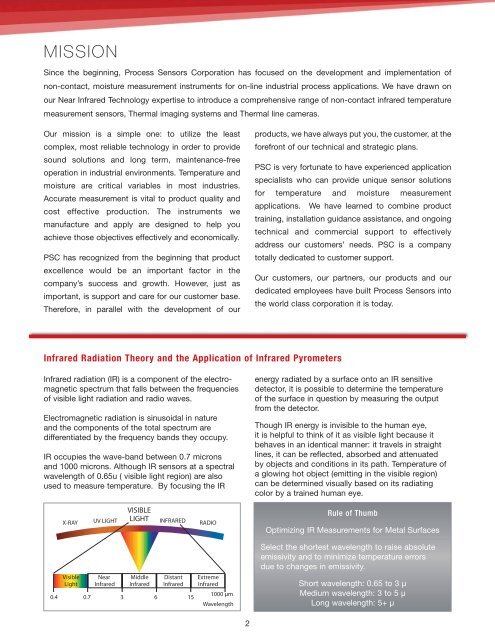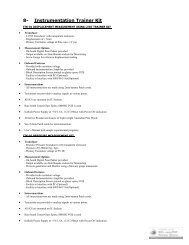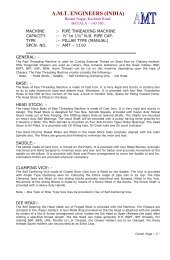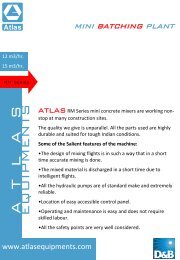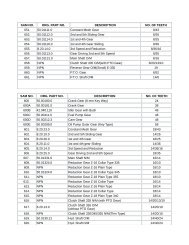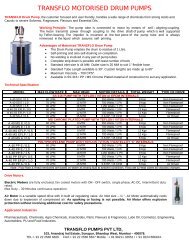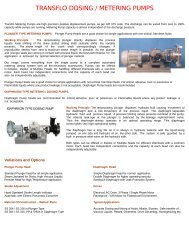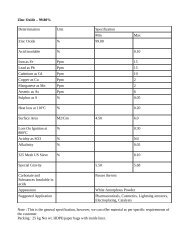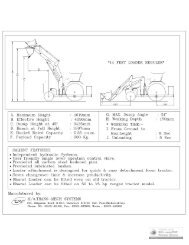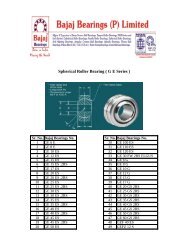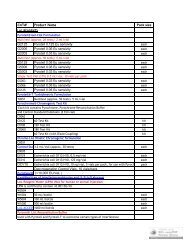#6162 PSC Overview Brochure
#6162 PSC Overview Brochure
#6162 PSC Overview Brochure
You also want an ePaper? Increase the reach of your titles
YUMPU automatically turns print PDFs into web optimized ePapers that Google loves.
MISSION<br />
Since the beginning, Process Sensors Corporation has focused on the development and implementation of<br />
non-contact, moisture measurement instruments for on-line industrial process applications. We have drawn on<br />
our Near Infrared Technology expertise to introduce a comprehensive range of non-contact infrared temperature<br />
measurement sensors, Thermal imaging systems and Thermal line cameras.<br />
Our mission is a simple one: to utilize the least<br />
complex, most reliable technology in order to provide<br />
sound solutions and long term, maintenance-free<br />
operation in industrial environments. Temperature and<br />
moisture are critical variables in most industries.<br />
Accurate measurement is vital to product quality and<br />
cost effective production. The instruments we<br />
manufacture and apply are designed to help you<br />
achieve those objectives effectively and economically.<br />
<strong>PSC</strong> has recognized from the beginning that product<br />
excellence would be an important factor in the<br />
company’s success and growth. However, just as<br />
important, is support and care for our customer base.<br />
Therefore, in parallel with the development of our<br />
Infrared Radiation Theory and the Application of Infrared Pyrometers<br />
Infrared radiation (IR) is a component of the electromagnetic<br />
spectrum that falls between the frequencies<br />
of visible light radiation and radio waves.<br />
Electromagnetic radiation is sinusoidal in nature<br />
and the components of the total spectrum are<br />
differentiated by the frequency bands they occupy.<br />
IR occupies the wave-band between 0.7 microns<br />
and 1000 microns. Although IR sensors at a spectral<br />
wavelength of 0.65u ( visible light region) are also<br />
used to measure temperature. By focusing the IR<br />
X-RAY<br />
Visible<br />
Light<br />
UV LIGHT<br />
VISIBLE<br />
LIGHT INFRARED RADIO<br />
Near<br />
Infrared<br />
Middle<br />
Infrared<br />
Distant<br />
Infrared<br />
0.4 0.7 3 6 15<br />
Extreme<br />
Infrared<br />
1000 µm<br />
Wavelength<br />
2<br />
products, we have always put you, the customer, at the<br />
forefront of our technical and strategic plans.<br />
<strong>PSC</strong> is very fortunate to have experienced application<br />
specialists who can provide unique sensor solutions<br />
for temperature and moisture measurement<br />
applications. We have learned to combine product<br />
training, installation guidance assistance, and ongoing<br />
technical and commercial support to effectively<br />
address our customers’ needs. <strong>PSC</strong> is a company<br />
totally dedicated to customer support.<br />
Our customers, our partners, our products and our<br />
dedicated employees have built Process Sensors into<br />
the world class corporation it is today.<br />
energy radiated by a surface onto an IR sensitive<br />
detector, it is possible to determine the temperature<br />
of the surface in question by measuring the output<br />
from the detector.<br />
Though IR energy is invisible to the human eye,<br />
it is helpful to think of it as visible light because it<br />
behaves in an identical manner: it travels in straight<br />
lines, it can be reflected, absorbed and attenuated<br />
by objects and conditions in its path. Temperature of<br />
a glowing hot object (emitting in the visible region)<br />
can be determined visually based on its radiating<br />
color by a trained human eye.<br />
Rule of Thumb<br />
Optimizing IR Measurements for Metal Surfaces<br />
Select the shortest wavelength to raise absolute<br />
emissivity and to minimize temperature errors<br />
due to changes in emissivity.<br />
Short wavelength: 0.65 to 3 µ<br />
Medium wavelength: 3 to 5 µ<br />
Long wavelength: 5+ µ


